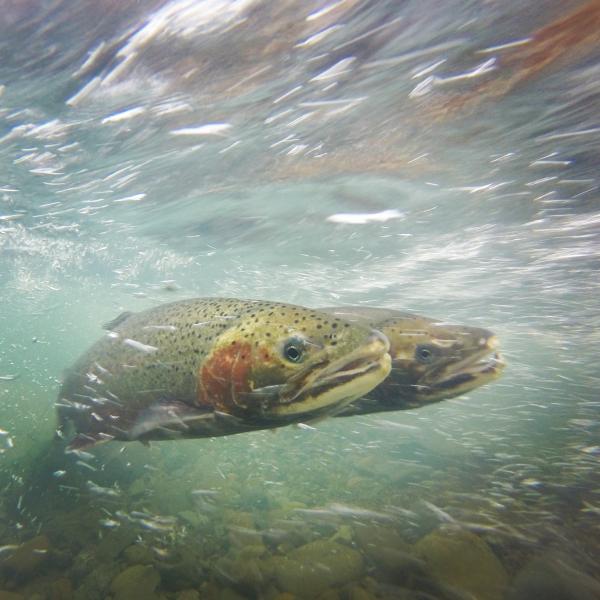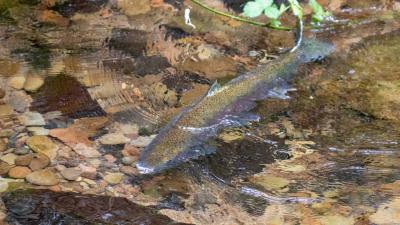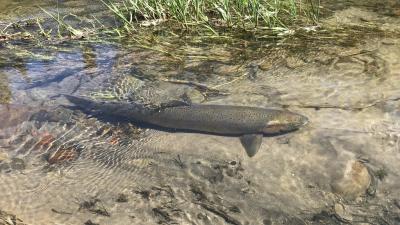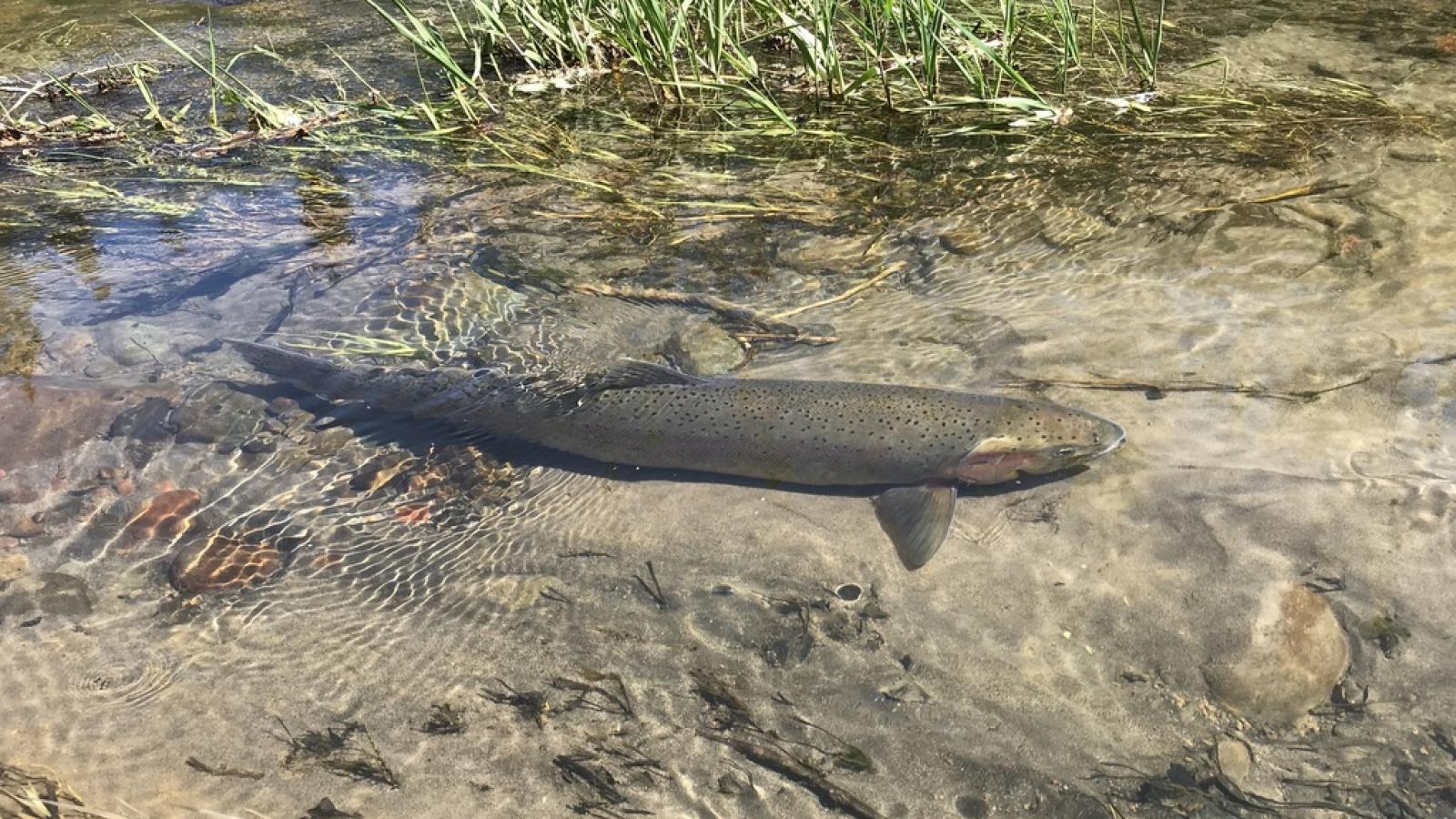Steelhead trout (Oncorhynchus mykiss) are anadromous fish - following their birth and early life in freshwater, they migrate to the ocean to further grow and mature. A few years later, they journey back to the same freshwater spawning grounds to reproduce, or spawn.
Adult central California coast steelhead (Oncorhynchus mykiss irideus), the subspecies found within and around Midpen open space lands, typically emerge from the ocean into freshwater during high winter flows and spawn during late spring in gravel beds at the bottom of rivers and streams with stable flows.

Steelhead Trout Fast Facts
- Can grow up to 55 pounds and 45 inches
- Typical lifespan of 4 – 6 years
- Oldest known steelhead was estimated to be 11 years old!
- Usually dark olive on the head and back with a steely silver sheen on the sides and underbelly
- Peppered with black spots along the body, dorsal fin and tail
- An iridescent pink to red strip from the cheek along their sides
The eggs hatch about a month later, revealing baby fish, or fry, which begin to feed and grow. Once juvenile steelhead reach an appropriate length, they undergo smoltification, a process that prepares them for their future expedition to and life in the ocean as they begin to move downstream. Once large enough, the steelhead begin their great migration to the cooler waters of the open ocean. They eat squid, mollusks, crustaceans and fish in the Pacific Ocean and can grow up to 55 pounds in weight and 45 inches in length!
After years “abroad” in the ocean, steelhead trout rely on their incredible homing ability to return to their natal stream to spawn. And unlike some other anadromous salmonid species like coho and chinook that die after spawning, steelhead may return to the ocean and come back upstream several times for spawning season.

Interestingly, some members of this trout species never leave their freshwater homes or are land locked by instream migration barriers like dams and are referred to as rainbow trout. Though rainbow and steelhead trout are the same species they exhibit two distinct lifestyles and can have slight physical differences.
The central California coast steelhead is a federally threatened species heavily impacted by human activity, such as through the loss of high-quality habitat and restricted access to spawning grounds due to instream barriers like dams. Midpen’s conservation include instream habitat restoration, sediment reduction, improvement of watershed function and the protection of open space lands needed for these fish to thrive.

Indigenous History
Indigenous tribes traditionally cultivated steelhead trout using various methods. These included weirs, or low dams to redirect fish passage and early trolling techniques. Fishing tools included gaffs, poles, nets, spears, fish wheels, harpoons, leisters (a three-pronged spear), traps and hooks. These practices allowed them to manage and harvest steelhead trout as an essential food source.

